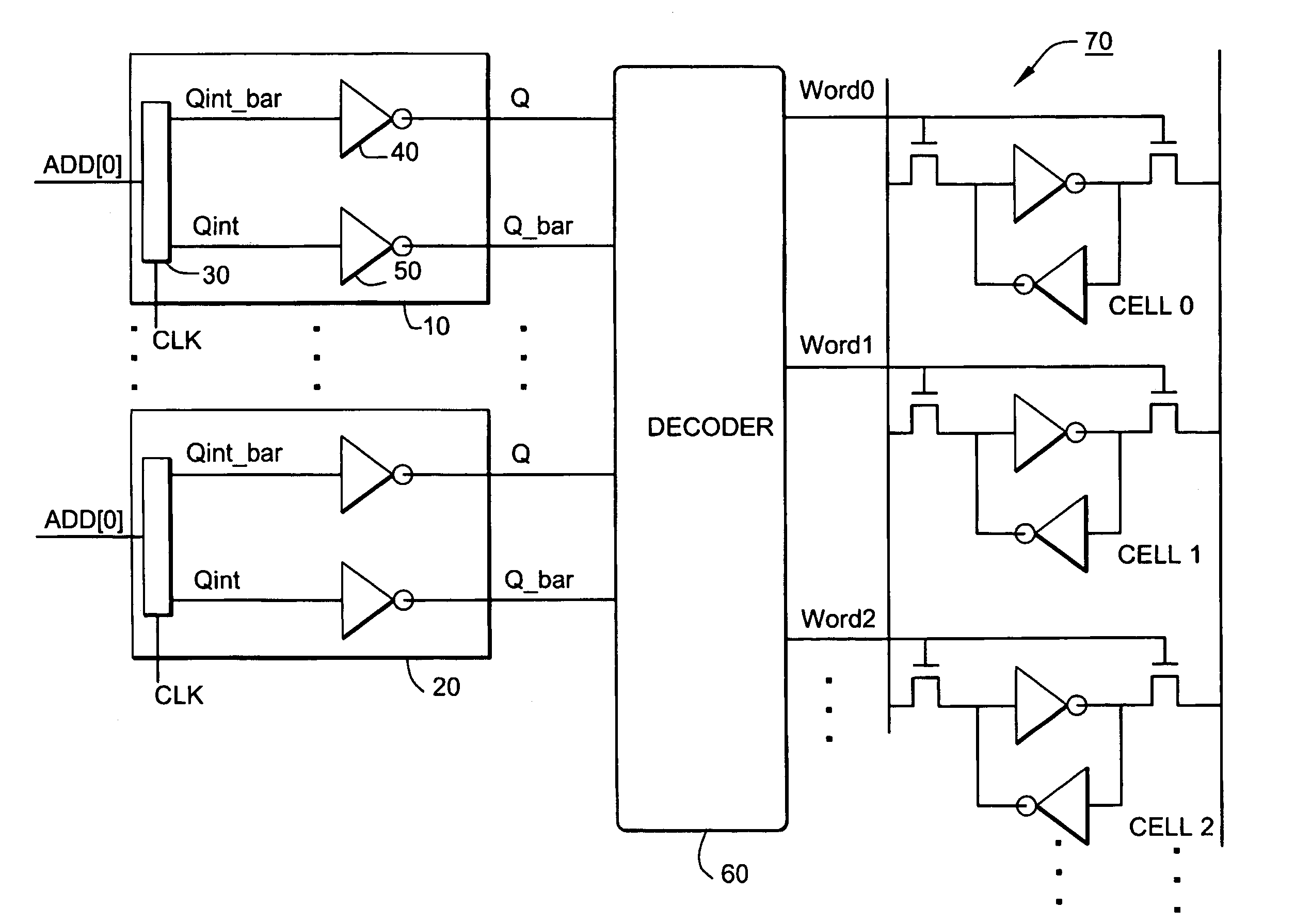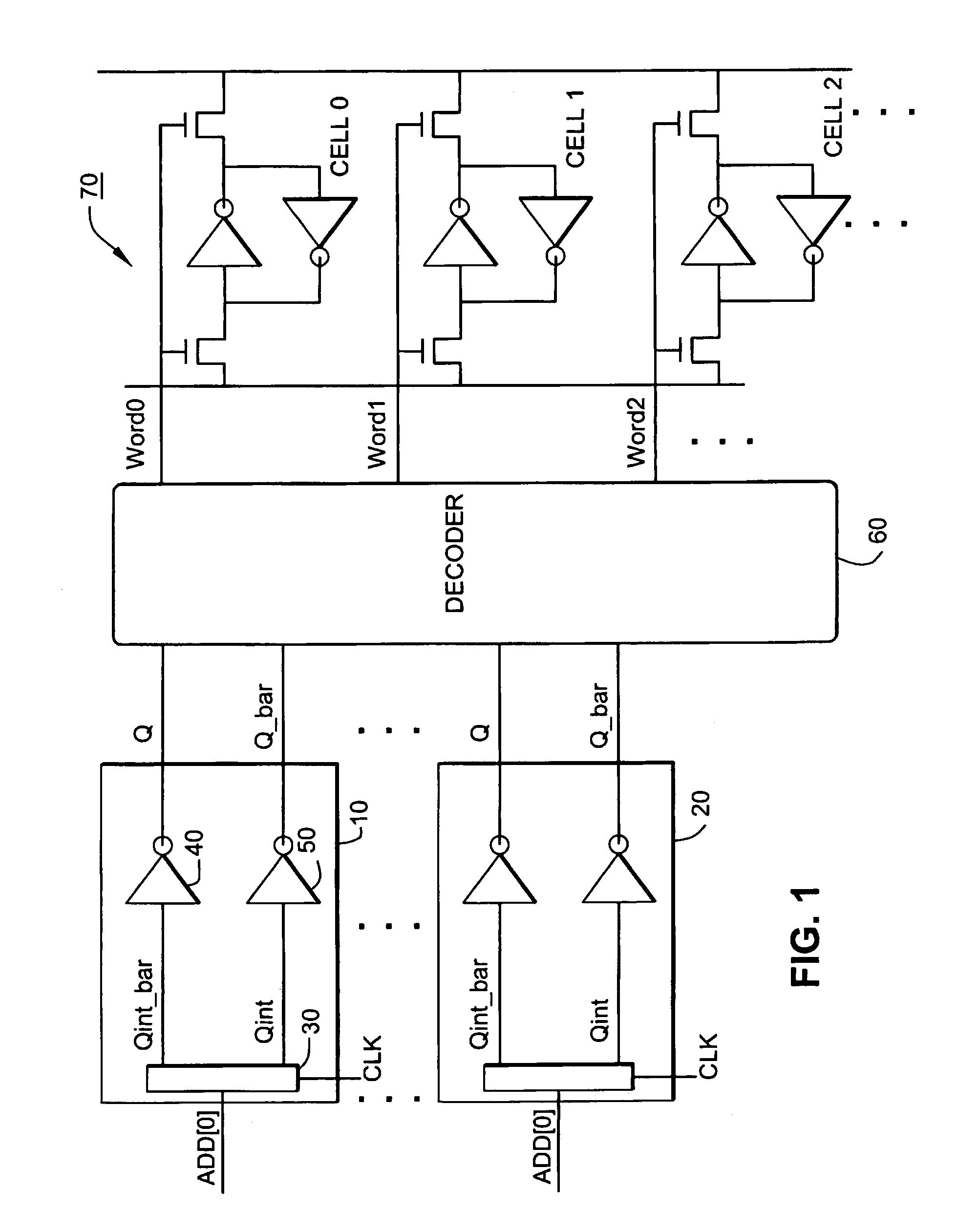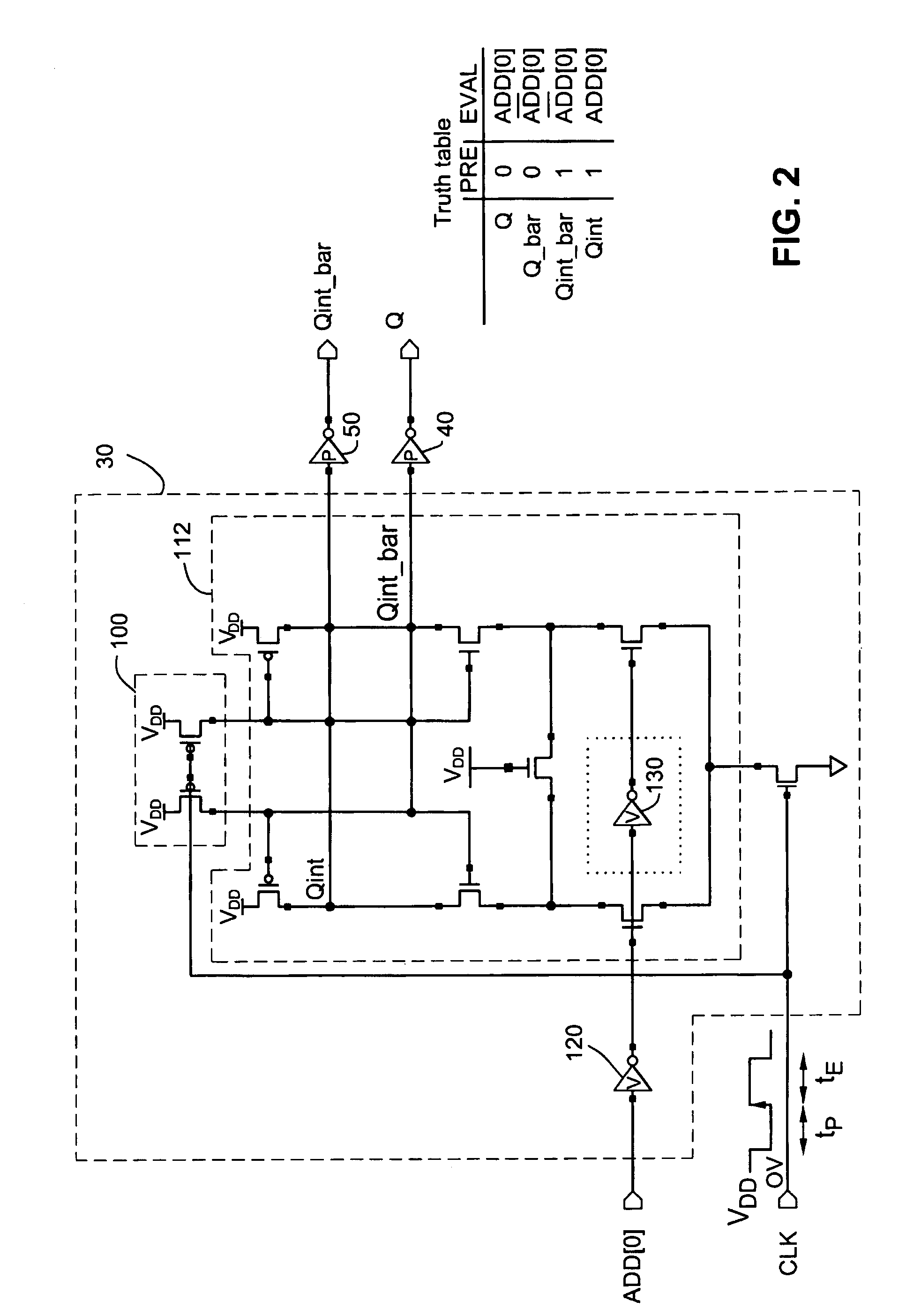Address decoding
a decoding and address technology, applied in the field of address decoding, can solve the problems of reducing the overall performance of the data processing apparatus to unacceptable levels, and invalid address signals being provided to the address decoder
- Summary
- Abstract
- Description
- Claims
- Application Information
AI Technical Summary
Benefits of technology
Problems solved by technology
Method used
Image
Examples
Embodiment Construction
[0036]FIG. 1 illustrates a number of signal interfaces 10, 20 according to an embodiment of the present invention, each operable to interface with an address decoder 60 and a memory 70.
[0037]Each signal interface 10, 20 comprise a precharge / evaluate circuit 30 and inverters 40 and 50. As will be explained in more detail below, the characteristics of these inverters 40 and 50 are selected to enable the associated signal interface to receive metastable signals whilst ensuring that no data corruption occurs in the memory 70. Each precharge / evaluate circuit 30 receives a portion of an address signal relating to an address to be accessed in the memory 70. In this embodiment, signal interface 10 receives bit 0 (ADD[0]) of the address value to be accessed in the memory 70, another signal interface receives bit 1 (ADD[1]) of the address value to be accessed in the memory 70, signal interface 20 receives bit n (ADD[n]) of the address value to be accessed in the memory 70, and so on.
[0038]Eac...
PUM
 Login to View More
Login to View More Abstract
Description
Claims
Application Information
 Login to View More
Login to View More - R&D
- Intellectual Property
- Life Sciences
- Materials
- Tech Scout
- Unparalleled Data Quality
- Higher Quality Content
- 60% Fewer Hallucinations
Browse by: Latest US Patents, China's latest patents, Technical Efficacy Thesaurus, Application Domain, Technology Topic, Popular Technical Reports.
© 2025 PatSnap. All rights reserved.Legal|Privacy policy|Modern Slavery Act Transparency Statement|Sitemap|About US| Contact US: help@patsnap.com



